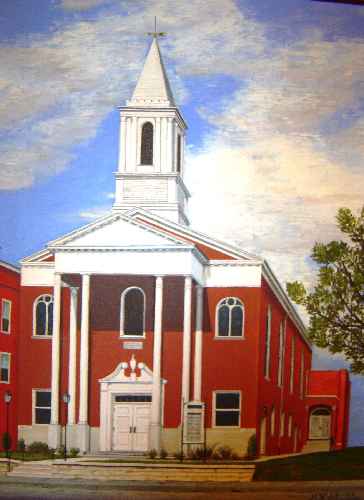History of Trinity
The History of Trinity Lutheran Church, New Holland, Pa
“Two years before the birth of George Washington and 46 years before the signing of the Declaration of Independence, the nucleus of our congregation was formed.
The first ministerial act in the congregation’s records was the baptism of John Balthaser Wundrich on May 1, 1730, making this congregation, along with Trinity Lancaster – then still an outpost of the British Empire – one of the oldest Lutheran churches in the United States.”
“When looking back at our church in the 1700’s, one is also looking back at our town, for the histories of the two run nearly parallel. Each played an important part in the growth of the other.”*
The early settlers in this area were Lutherans, the Reformeds and the Anabaptists. They came to America for various reasons – mostly because of religious persecutions and general hardships. When they came to Pennsylvania, they followed the Biblical instruction to “till the soil and multiply.”
Increasingly skillful as farmers, they produced excellent crops and the children learned at an early age to help on the farm. The women traded cooking skills, for much food was needed for hearty appetites. Brick ovens were used for baking. Flour and meal were family staples. Meats were smoked and apples and corn dried for the winter. Waste was abhorred, so scrapple and mincemeat were born. Wild herbs were gathered and used for flavoring and for medicinal teas. Wild berries were picked and used for pies and jams. Many goods may have been scarce, but farms were virtually self-sufficient and good, wholesome food was rarely lacking.
* Taken from “Trinity in the Revolutionary Years.”
The 1941 renovation is shown here as depicted in a painting that hangs in the narthex.

